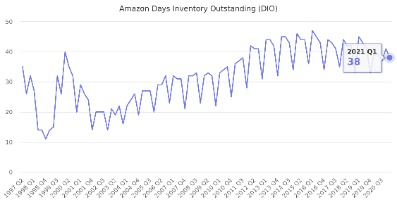In other words, we can say that freight out is the expense of the export of supplies from the manufacturer to the buyer. The main difference between freight in vs freight Freight In And Freight Out # out is that freight in is transportation expense incurred on purchasing the goods. On the other hand, freight out is transportation expense incurred in the sale of goods.
Click Computers has the following transactions related to the sale of merchandise inventory. 9 Purchased merchandise inventory on account from Tucker Wholesalers, $6,000. Yes, freight is clearly an operating cost as it is required to run the company and is essential for manufacturing the goods and products to continue its services. This is the shipping and handling cost required to deliver goods to customers. And, as was the case with freight in, there’re a couple of ways to account for it.
What costs are included in costs of good sold?
That means it won’t appear in the cost of goods sold until the related inventory items are eventually sold. That could work if you want to delay expense recognition. The key difference to understand is that freight-in is incurred to ship materials to the company’s production facility. Freight-in is part of the production process and will be capitalized into inventory and expensed through cost of goods sold when the product is sold. Freight-in is the cost incurred to ship finished goods to a distributor or retailer. Freight-out is considered a selling expense and is expensed when incurred.
- Freight-in is the money that the business spends to bring…
- This is the shipping and handling cost required to deliver goods to customers.
- Sep. 3 Purchased merchandise inventory on account from Sharpner Wholesalers, $5,500.
- This also means goods in transit belong to, and are the responsibility of, the seller.
On the other hand, this could result in charging a bit more to expense up front than would otherwise be the case. Merchandise Inventory increases (debit) and Accounts Payable increases (credit) by the amount of the purchase, including all shipping, insurance, taxes, and fees [(40 × $60) + (40 × $5)]. Delivery expense to be paid by the seller when its merchandise is sold with terms of FOB destination. This is an operating expense and is not included in the cost of merchandise. May 15 The customer uses the $20 award when purchasing merchandise inventory for $30.
Accounting for Freight Out
22 Made payment, less allowance, to Tucker Wholesalers for goods purchased on September 9. 10 Made payment to Sharpner Wholesalers for goods purchased on September 3, less return and discount. There are one to two methods to account for freight in expenses. There may even be cases where the freight out expense is negative, if the amount billed is routinely higher than the amount of the expense. In this case, you might have to capitalize the freight in cost, just to avoid questions from investors and lenders about why there’s this weird expense showing up in the income statement. In this podcast episode, we discuss the accounting issues related to freight in and freight out.
Is Landstar System, Inc. (LSTR) a Good Choice in Integrated Freight & Logistics Friday? – InvestorsObserver
Is Landstar System, Inc. (LSTR) a Good Choice in Integrated Freight & Logistics Friday?.
Posted: Fri, 26 May 2023 19:36:02 GMT [source]
A problem that might occur over here is the span in which it is considered. All the expenses related to the sale are recorded in the span the sale had occurred. However, the issue is that the shipping entity does not provide you with the bill or financial statement before the upcoming month. Freight out billings to customers should only be treated as revenue if doing so is the primary revenue-generating activity of the business. It seems like a strange business model if that’s how a company turns a profit. Instead, you would normally offset freight billings to customers against the freight out expense line item.
The Basics of Freight-in Versus Freight-out Costs
Last but not least, if you have ordered heavy and large bulky products such as cars, there will too be a burden on your budget. In this way, the cost recognition is wrongly put off, or we can say the prudence concept is compromised. Most businesses do not consider it essential to put off their expenses in the correct period. They hold back until the freight company sends them the bill, no matter how long it takes and what the period is.

For better understanding and analysis, expenses are classified into two types, direct and indirect expenses. All the expenses incurred to convert raw materials into finished goods are direct expenses, whereas all other expenses are indirect expenses. Accounts Receivable (debit) and Sales (credit) increases for the amount of the sale (30 × $150). Cost of Goods Sold increases (debit) and Merchandise Inventory decreases (credit) for the cost of sale (30 × $60). Delivery Expense increases (debit) and Cash decreases (credit) for the delivery charge of $120.
When you buy merchandise online, shipping charges are usually one of the negotiated terms of the sale. As a consumer, anytime the business pays for shipping, it is welcomed. For businesses, shipping charges bring both benefits and challenges, and the terms negotiated can have a significant impact on inventory operations.
What is difference between freight in and freight out?
Financial treatment: Freight In is typically an addition to the cost of the goods and is present in the inventory value. In contrast, freight out is a separate expense and is not present in the inventory value.
To illustrate, suppose CBS sells 30 landline telephones at $150 each on credit at a cost of $60 per phone. On the sales contract, FOB Destination is listed as the shipping terms, and shipping charges amount to $120, paid as cash directly to the delivery service. If FOB destination point is listed on the purchase contract, https://kelleysbookkeeping.com/what-are-prepaid-expenses/ this means the seller pays the shipping charges (freight-out). This also means goods in transit belong to, and are the responsibility of, the seller. The point of transfer is when the goods reach the buyer’s place of business. Gathering freight out in the exact span is more of a headache than its benefits.
When a company buys the raw materials to produce its goods, it requires freight to import those materials. This expense the company has to pay to the supplier is called freight in expense. Freight is a fraction of the manufacturing procedure, that is, the cost for purchase. However, if a buyer analyzes the profit, the expense of freight out is not to be ignored as it can result in a large decrease in profits by the buyer. It can be much costly, especially when the transportation is over large distances, across continents all over the world. Secondly, it would also be expensive if the product is ordered urgently.

This should result in a pretty small freight out expense. Suppose CBS buys 40 tablet computers at $60 each on credit. The purchase contract shipping terms list FOB Shipping Point. The shipping charges amount to an extra $5 per tablet computer.

Recent Comments